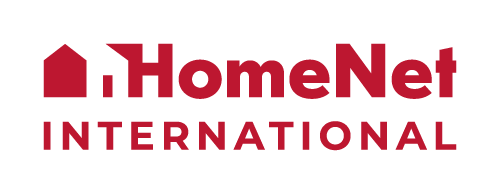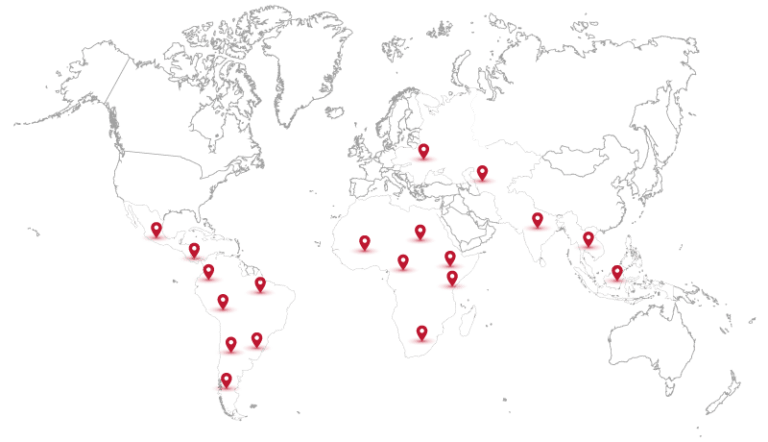By: Tatiana Rojas and Sarbani Kattel
In April of this year, at the HNI Congress, a pivotal decision was made. The Executive Committee recognized the need to establish a Gender Committee, acknowledging that a significant majority of HNI members are women who bear the dual burden of poverty and gender discrimination. This committee was designed to involve HNI affiliates from each region, transcending the boundaries of the Executive Committee. Its aim? To harness the collective power of HNI affiliates from Latin America, Africa, Eastern Europe and Central Asia, South Asia, and Southeast Asia and jointly work on the following objectives:
- Understanding Gender Dynamics: To comprehend the unique challenges faced by home-based workers (HBWs) worldwide, through a gender lens.
- Gender-Centric Program Monitoring: To monitor HNI's programs and research through a gender-focused perspective, ensuring inclusivity and equity.
- Policy Development: To develop and implement gender-sensitive policies, procedures, and guidelines within the organisations.
- Training: To develop and provide training programs to build awareness and understanding of gender issues among HNI Secretariat, Executive Committee, Office-bearers, Regional Coordinators and HNI members.
- Advocacy for ILO Convention 190: To advocate for the ILO Convention 190 on Violence and Harassment in the World of Work.
In July 2023, the Gender Committee convened its inaugural meeting, setting the stage for monthly discussions. Among its initial tasks, the committee embarked on a two-fold mission: Understanding HBWs demands and crafting a purpose and scope of HNI Code of Conduct.
To gather valuable insights, an online whiteboard (Jamboard) was employed. Three pivotal questions were posed to committee members:
- What are the demands of HBWs in your country?
- What is the purpose of the HNI Code of Conduct?
- What is the scope of the HNI Code of Conduct?
 During the committee’s second meeting in August 2023, it became evident that collecting demands from HBWs required a more comprehensive approach. Different regions may have unique challenges and needs that HBWs face. The demands of HBWs in one area may not be the same in another due to variations in economic conditions, cultural norms, and infrastructure. To ensure a wide range of voices were heard, a detailed survey with specific questions was deemed necessary. This survey, developed with inputs from the committee, would be distributed to affiliates via Google Questionnaire Forms.
During the committee’s second meeting in August 2023, it became evident that collecting demands from HBWs required a more comprehensive approach. Different regions may have unique challenges and needs that HBWs face. The demands of HBWs in one area may not be the same in another due to variations in economic conditions, cultural norms, and infrastructure. To ensure a wide range of voices were heard, a detailed survey with specific questions was deemed necessary. This survey, developed with inputs from the committee, would be distributed to affiliates via Google Questionnaire Forms.
The purpose and scope of the Code of Conduct also emerged as vital considerations as its main aim is to ensure an establishment and maintenance of safe, inclusive and respectful working environment within HNI, between the affiliates, during HNI online and physical events, and during interaction with the various stakeholders HNI encounters during its day-to-day activities. Acknowledging the cultural complexities within each region and variations in the interpretation of terms such as respect, inclusivity, diversity, harassment, and violence, the committee recognized the need for a novel approach that honours differences, diversity, and intersectionality.
“We should try to use a common language because, for example, when we say respect, do we all mean the same thing? Or when we say women’s rights, do we understand that the culture of each region can make us mean different things by the same concept?” – Tatiana Rojas, Chair, Gender Committee.
To address these concerns, the committee decided to create a Glossary of terms, drawing from reputable sources like ILO and UN Women documents. These terms will be collectively reviewed and presented in accessible language, encompassing diverse perspectives to create a Glossary that is representative of all regions. In another strategic move, the committee recognized the importance of understanding who HNI interacts with and the potential risks associated with these interactions. This understanding will guide appropriate communication strategies and provide shape to HNI Code of Conduct.
To ensure a wider representation and to enrich discussions, the committee is currently expanding to include additional participants per region, having a total of 12 committee members. While united by common demands, the committee recognizes that the strength of their collective effort lies in understanding the specific demands of each country. Intersectionality is their guiding principle.
In conclusion, HNI’s Gender Committee is not merely an entity; it’s a dynamic force actively working to promote equity, and foster an inclusive and respectful environment. The journey has begun, and it strives to be transformative for HNI and its affiliates.





